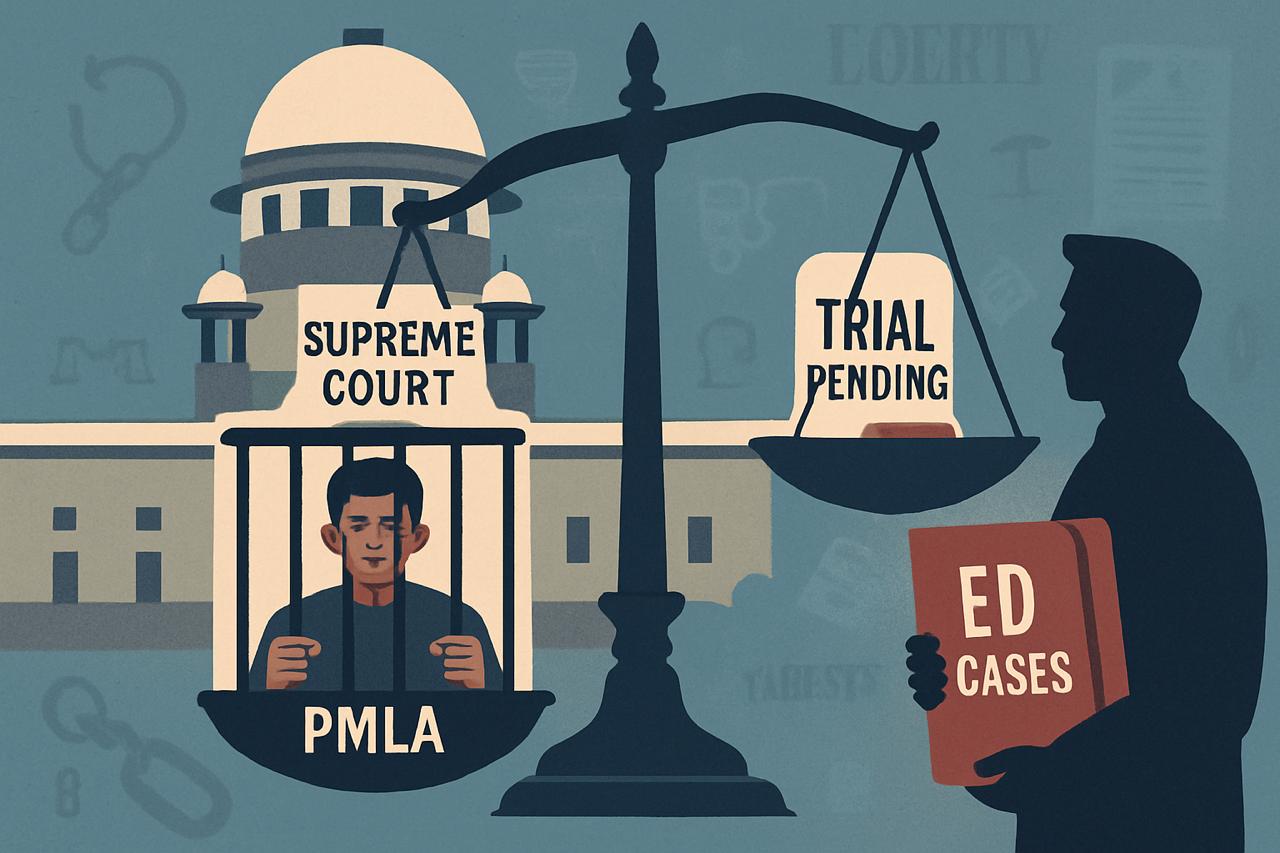Introduction
Every now and then, a passing courtroom exchange throws a spotlight on a bigger national worry. That’s exactly how the debate around ED’s conviction rate exploded after recent remarks by the Supreme Court, which wondered out loud whether India’s anti-money laundering law is jailing more people than it convicts. Behind the statistics, there are real stories of long years in custody, delayed trials, and big questions about justice. The focus on ED’s conviction rate isn’t just bureaucratic: it’s about the fate of liberty in India.
Justice and Power: The Supreme Court’s Doubts About ED’s Conviction Rate
It’s rare to hear the country’s most powerful judges wonder if India’s enforcement agencies are “sentencing without trial,” but recent observations in court brought ED’s conviction rate under heavy scrutiny. The conversation turned, almost immediately, to why so many accused under the Prevention of Money Laundering Act are awaiting justice, with real convictions so few and far between.
Parsing Delays, Lawyers, and the Influence on ED’s Conviction Rate
The blame game over slow cases is familiar; some say “influential” defendants slow things with endless applications; others point to overburdened courts. But with thousands of cases and barely a sliver ending in convictions, even the government had to admit ED’s conviction rate is low, raising tough questions about the agency’s methods and India’s due process.
How Liberty Collides with Procedure When ED’s Conviction Rate Stays Low
For every person acquitted after years of waiting, ED’s conviction rate becomes more than a data point: it’s a test of the system’s conscience. The Court didn’t hide its discomfort with pre-trial detention stretching on while acquittals mount and the presumption of innocence, supposedly a bedrock right, gets quietly undermined.
ED’s Conviction Rate and the Risk to Public Trust
When people spend years behind bars awaiting trial, only to be cleared eventually, it shakes public confidence in the entire justice system. You start to wonder if ED’s conviction rate isn’t reflecting actual guilt, what’s that doing to how much faith citizens place in law enforcement? It’s a tough question, but one courts and society need to confront.
Reforms Under Debate in Light of ED’s Conviction Rate Scrutiny
Faced with this ongoing challenge, some Supreme Court justices have floated the idea of creating special fast-track courts dedicated to ED cases. Stricter oversight measures might also be on the table. The hope? To rewrite the story around ED’s conviction rate to stop accused individuals from being stuck in limbo, waiting indefinitely while their lives hang in the balance.
Toward Change: The Legal Community’s Hopes Tied to ED’s Conviction Rate
As the Court watches closely, lawyers, activists, and rights groups can’t help but feel a growing sense of anticipation about what might come next. Everyone’s watching to see whether any real change will come to fix the problem that’s masked by those troubling numbers around ED’s conviction rate.
Conclusion:
In the end, ED’s conviction rate touches far more than just one enforcement agency’s reputation. It stands for the balance between the state’s power and individual freedom, a balance the Supreme Court is now forcing India to confront. Whether reforms follow or not, this renewed focus signals that numbers, in law as in life, always have a human cost.
Author Information:
By Karthikeyan Ganesan, a law student from KKC College of Law, reporting on law and technology for Nyayasphere. Karthikeyan always likes to stay updated with current trends and important information regarding the law and cases across the country.

